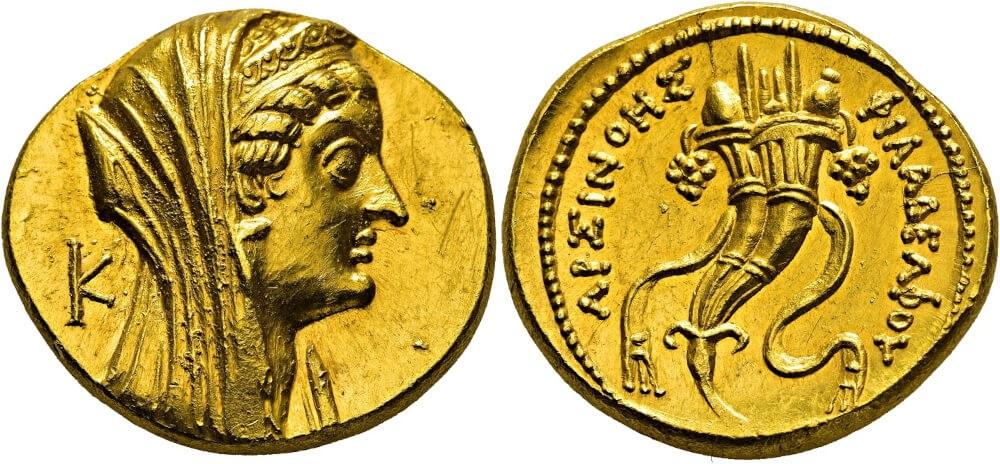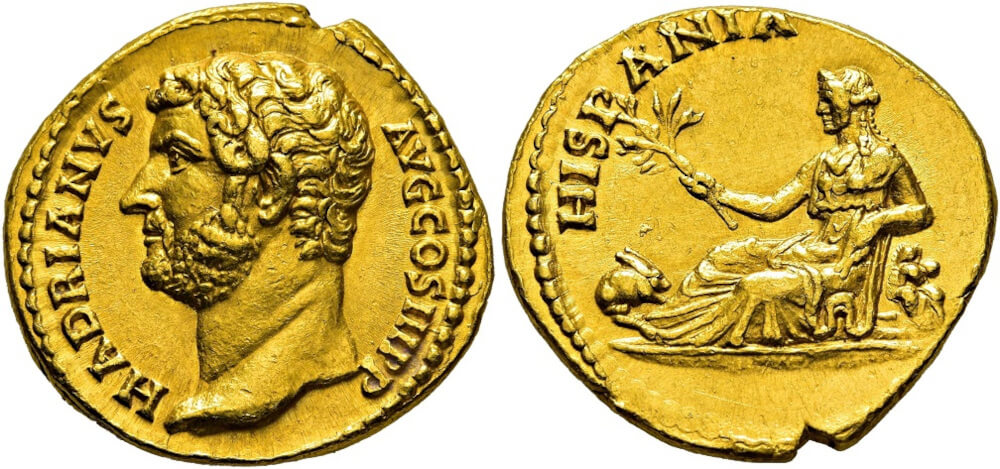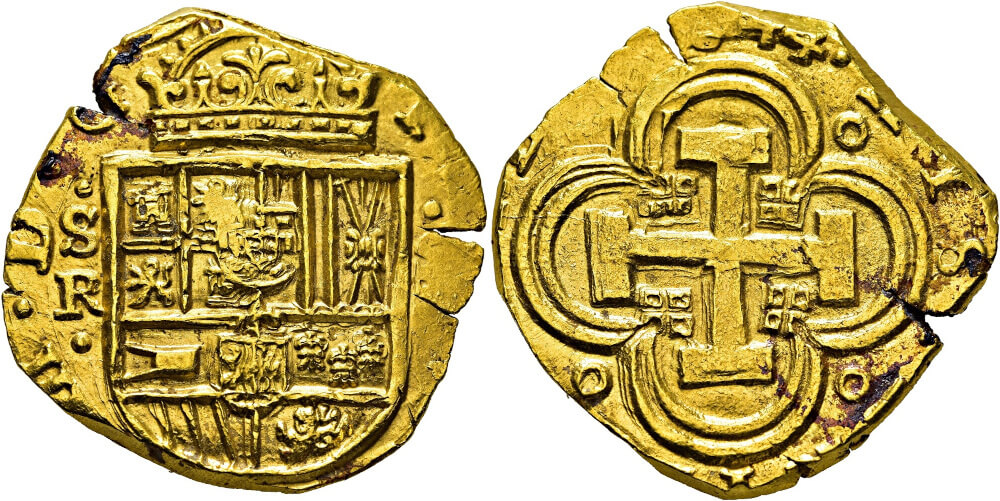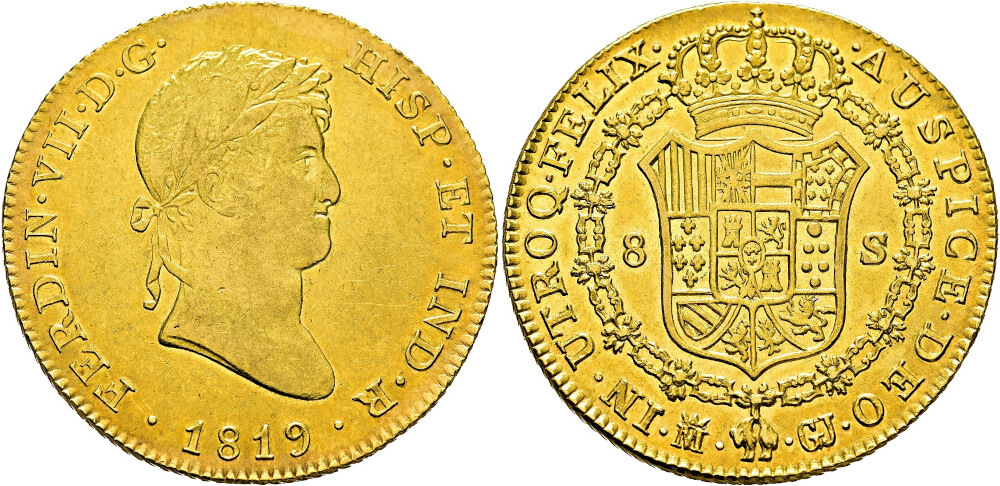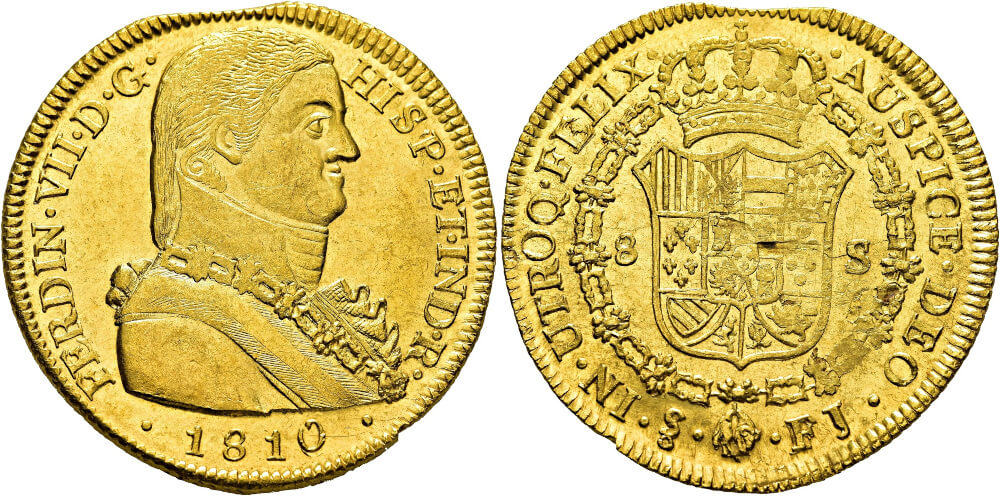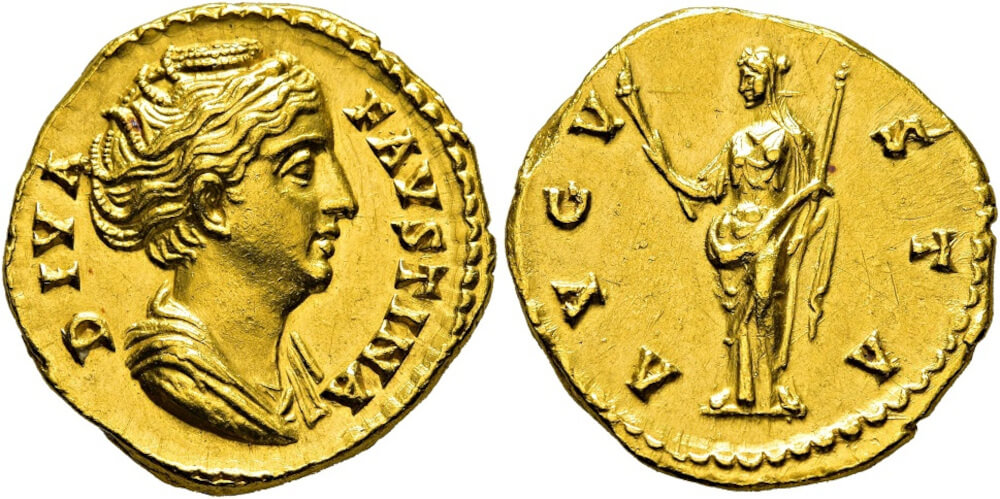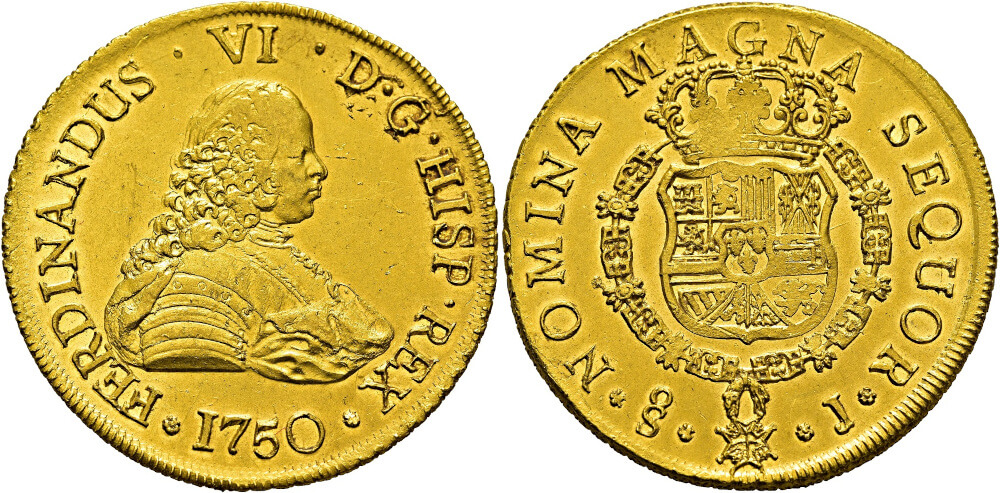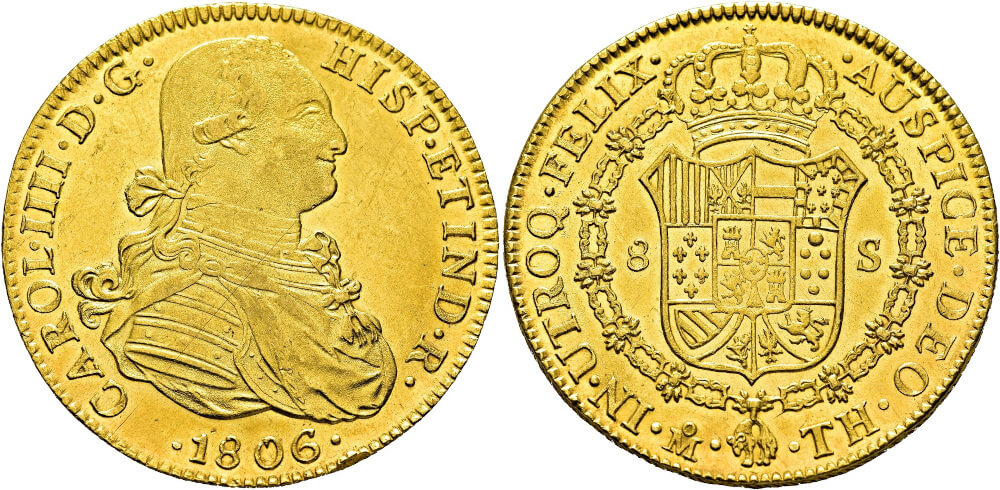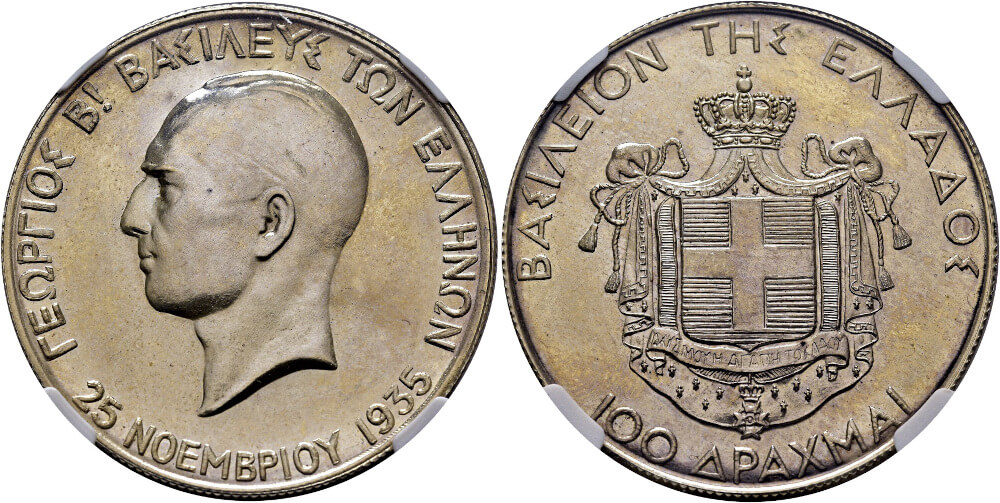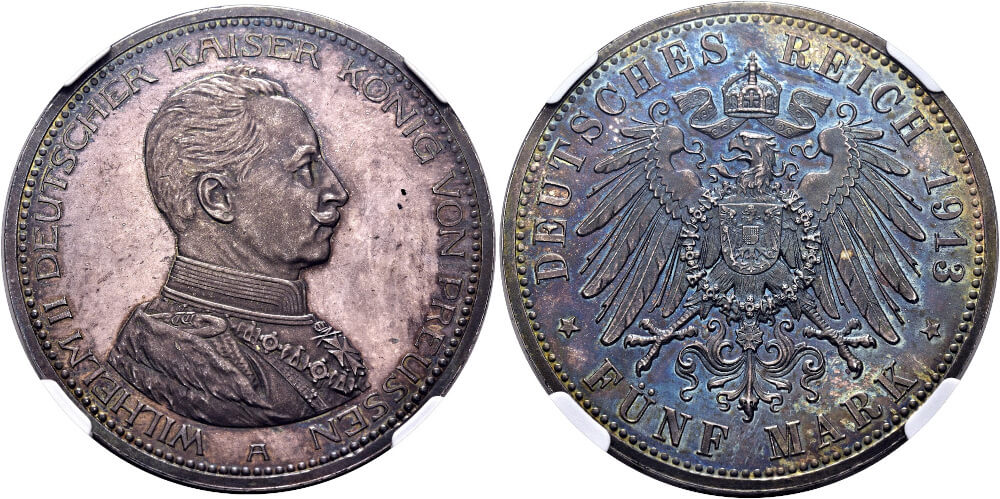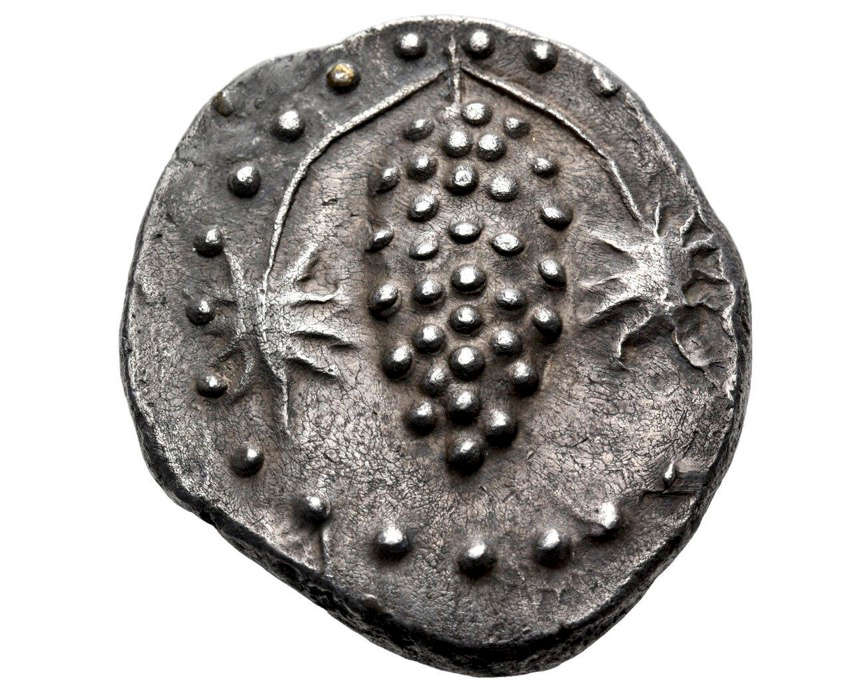The Kagan Collection at Nomos
Nomos AG
Nomos 32 and 33
Coins
8-9 June 2024
CH-Zurich
Nomos AG presents their auctions 32 and 33, closing on 8th and 9th June 2024 in Zurich. Auction 32 features the Major Anthony F. Milavic USMC (Ret.) Collection of ancient games coins, exceptional ancient greek, roman, byzantine and world coins. The following auction, Nomos 33, includes the Jonathan H. Kagan Collection of archaic and classical greek coins. The sale contains 488 lots (1001-1488), ranging from 5th century silver obols of Emporion in Spain (1001-1002) all the way round the Mediterranean to a late 4th-early 3rd century gold obol of Kyrene (1488).
Jonathan H. Kagan, the well-known polymath investment banker, scholar, numismatist and bibliophile, formed with a discerning eye, a keen sense of style and a deep knowledge of history, as well as with the enthusiastic aid and encouragement of his distinguished wife and helpmeet, Ute Wartenberg-Kagan, this collection providing an outstanding overview of the ancient Greek world’s coinage during the first centuries – c. 650-450/350 BCE – of its existence (there are a very few later outliers, often quite unusual). In fact, the Kagan Collection’s only rival in content is the famous assemblage put together by that other well-known Jonathan, J. P. Rosen. But what makes this collection so important is that it is “academic” in the best sense of the word: all the coins within it were chosen for their evidential value as representatives of early Greek coinage. Rarity and interest was a prime concern, all denominations were included – in silver, from fractions of the obol to oktadrachms, and, in electrum and gold, from 1/96ths to staters, and a coin’s scholarly importance always trumped its condition (though badly damaged or only partly legible coins were generally avoided).
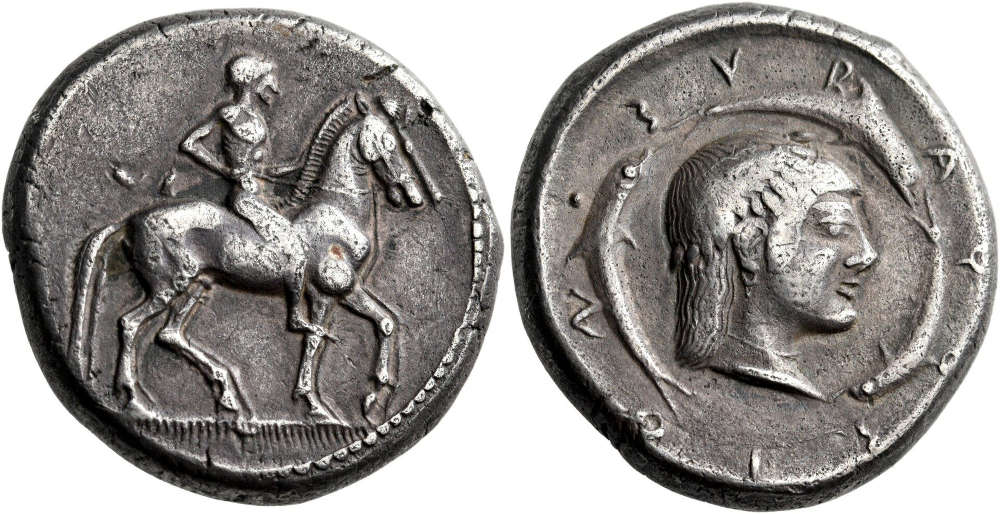
Lot 1047: Sicily. Syracuse. Deinomenid Tyranny (485-466 BC). Didrachm, struck under Gelon I (480-478). Lightly toned. Slightly porous, otherwise, about very fine. Estimate: 2,250 CHF
- Lot 1047 – The didrachms of Syracuse are much rarer than their contemporary tetradrachms and fractions, but this one, given its extraordinary iconography, is probably the rarest of them all (lot 1047, est. 2250 CHF). Published long ago by Regling when it was in the collection of E.P. Warren, and then by Boehringer (Boehr. 50.2), it had gone into the collection of the Boston Museum of Fine Arts in 1904. They then deaccessioned it in 1980 – presumably they did not realize its true significance, alas. And that significance relates to the unique way Arethusa’s hair is adorned: rather than the usual pearl diadem Arethusa has one decorated with pendant acorns! This must have been what the rich and elegant Syracusan women were wearing in c. 480-478, but it must have been thought to be too much for Arethusa, since it was never repeated!
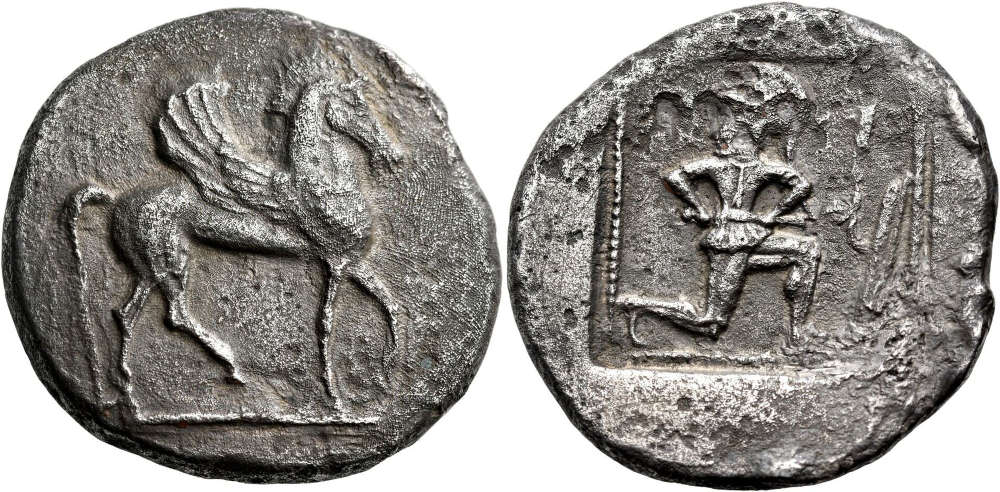
Lot 1107: Macedon. Argilos. Circa 510-500 BC. Tetradrachm. Extremely rare, the finer of the two known specimens. Rough surfaces, some corrosion pits and reverse struck from a damaged die, otherwise, very fine. Estimate: 12,500 CHF.
- Lot 1107 – This tetradrachm from the mint of Argilos in Macedonia, c. 500 BC (lot 1107, est. 12,500 CHF) shows us Pegasos prancing to right, seemingly following the hero Bellerophon, who is running to the right on the reverse. The hero is wearing armor, including a rather large helmet (perhaps the engraver made it overly large to emphasize it?), and running to right. He is, however, turning his head back to left (looking to see what Pegasos is doing?), holding his scabbarded sword with two hands across his waist and running to right. He may well be hurrying to get his shield and cloak, which seem to be hanging on the right. Perhaps that is why he is looking back towards Pegasos: fully equipped he will be ready to ride. This coin is extremely rare: it is the better of the two known examples and comes from the great Taranto Hoard of 1911 (it also belonged to R. Jameson and C. Gillet).
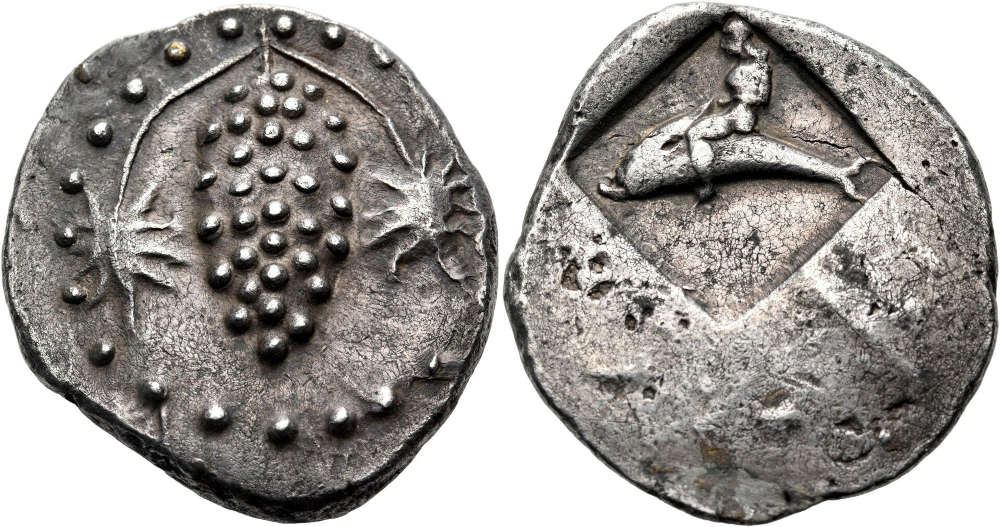
Lot 1144: Islands off Thessaly, Peparethos. Circa 500-480 BC. Tetradrachm. Beautiful and extremely rare, apparently the only example known. Toned and most impressive. Minor repair at the upper left on the obverse, somewhat porous and with possible traces of an uncertain undertype on the reverse, otherwise, about extremely fine / good very fine. Estimate: 100,000 CHF
- Lot 1144 – One of the most important coins of this sale – or of any sale! – is lot 1144 (est. 100,000 CHF), the famous tetradrachm from Peparethos (modern Skopelos – where Mamma Mia! was filmed). It is by far one of the most dramatic of all the coins struck in Late Archaic northern and central Greece. The broad, thin flan is immediately reminiscent of those used for the contemporary coinage of, among others, the relatively nearby mints of Terone and Eretria, but the combination of a bold, high-relief obverse and a “miniature” reverse depiction is compositionally outstanding. The obverse shows us a boldly prominent bunch of grapes, on a stem with two leaves, surrounded by a border of boldly separated dots: its appearance as the city badge is due to the importance of the wine trade for Peparethos’s economy. On the reverse we almost certainly see a figure of Staphylos – son of Dionysos and Ariadne – on his way to the island: he founded the city and began viticulture. As with the tetradrachm from Argilos, discussed above, this coin both was found in the Taranto Hoard of 1911 and previously belonged to the great connoisseur R. Jameson (and it is illustrated in both Kraay / Hirmer and in the Traité). As an interesting aside, in 1936 the famous Greek archaeologist, N. Platon dug up a royal Mycenaean tomb on Skopelos, which contained, among other things, a magnificent sword that had a handle covered in gold leaf. It is now in the National Museum in Athens and is known as the “sword of King Staphylos”.
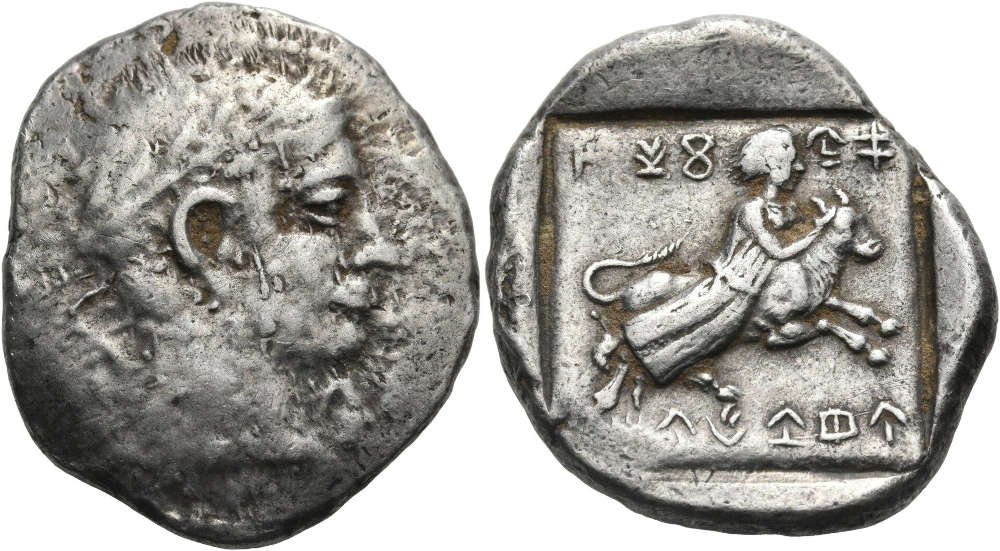
Lot 1455: Cyprus. Marion. Timocharis, mid 4th century BC. Stater. Very rare and beautifully toned. Struck from a worn obverse die as usual, otherwise, good very fine. Estimate: 6,500 CHF.
- Lot 1455 – This extraordinary coin is a stater struck by King Timocharis of Marion in Cyprus at some point in the mid 4th century BC (lot 1455, est. 6500 CHF). It is a very rare coin, and a very special one too. The obverse bears a head of Apollo and is struck from a rather worn die (the use of dies until they fell apart was common on 5th and 4th century Cyprus, and in adjacent areas in Asia Minor; as it was in 5th century Olympia). But, of course, the importance of this coin comes from its reverse, well-struck from a fresh die: we see Zeus, in the form of a bull, running off with Europa, daughter of the king of Phoenicia! He has swept her off her feet and she is not riding him, but hanging on from his horns for dear life! You can just imagine her shouting “Stop, stop!, you’re going too fast!! Watch out for that Nereid!!! There’s a Stop Sign!! Slow Down!!!” In any event, she arrived safely in Crete and bore Zeus three sons, Minos, Rhadamanthys and Sarpedon. What an amazing coin this is.




